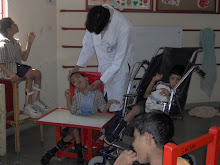The history of antibiotic prophylaxis is one of substantial ignorance and profound abuse.Although the rationale for infective endocarditis prophylaxis has been understood since the 1950's the application of this theory into practice has undergone many changes. The AHA has made recommendations for the prevention of IE for more than 50 years.
 from Wilson W et.al Prevention of infective endocarditis: Guidelines from the American Heart Association: A guideline from the American Heart Association Rheumatic Fever, Endocarditis and Kawasaki Disease Committee, Council on Cardiovascular Disease in the Young, and the Council on Clinical Cardiology, Council on Cardiovascular Surgery and Anesthesia, and the Quality of Care and Outcomes Research Interdisciplinary Working Group
from Wilson W et.al Prevention of infective endocarditis: Guidelines from the American Heart Association: A guideline from the American Heart Association Rheumatic Fever, Endocarditis and Kawasaki Disease Committee, Council on Cardiovascular Disease in the Young, and the Council on Clinical Cardiology, Council on Cardiovascular Surgery and Anesthesia, and the Quality of Care and Outcomes Research Interdisciplinary Working GroupBetween 1955 and 1997 the AHA guidelines were modified 8 times, each modification making allowance for previously unexplained phenomenon such as penicillin resistance, or the shift to safer drugs such as erythromycin and later clindamycin from more dangerous drugs such as chloramphenicol for penicillin allergic patients.The 1997 document stratified cardiac conditions into high-, moderate- and low-risk (negligible risk) categories with prophylaxis not recommended for the low-risk group. An even more detailed list of dental, respiratory, GI and GU tract procedures for which prophylaxis was and was not recommended was provided. The 1997 document was notable for its acknowledgment that most cases of IE are not attributable to an invasive procedure but rather are the result of randomly occurring bacteremias from routine daily activities and for acknowledging possible IE prophylaxis failures.
However despite this knowledge,it would take another 10 years before the AHA would put this knowledge into practice. The 2007 guidelines and their acceptance by the ADA in 2008, place a great emphasis on the role of transient bacteremia due to daily activities and greatly reduce the number of conditions where prophylaxis is required. This however DOES NOT mean that prophylaxis is not necessary or that the concept is redundant.








No comments:
Post a Comment